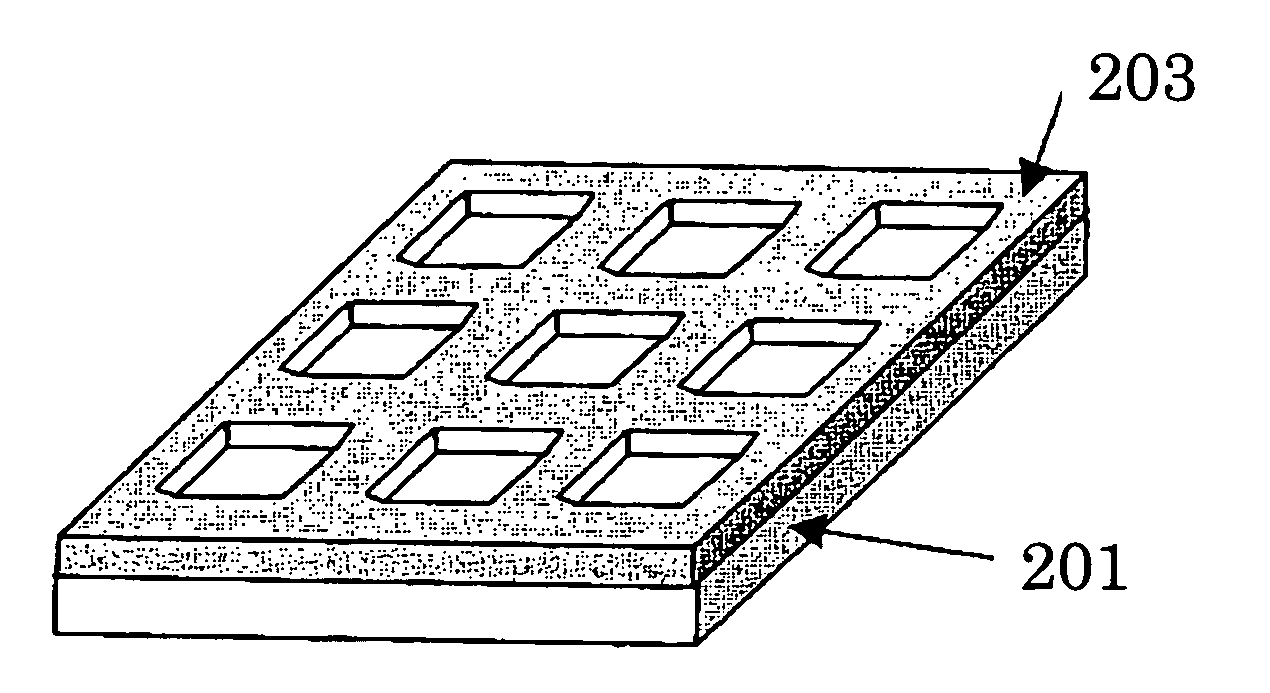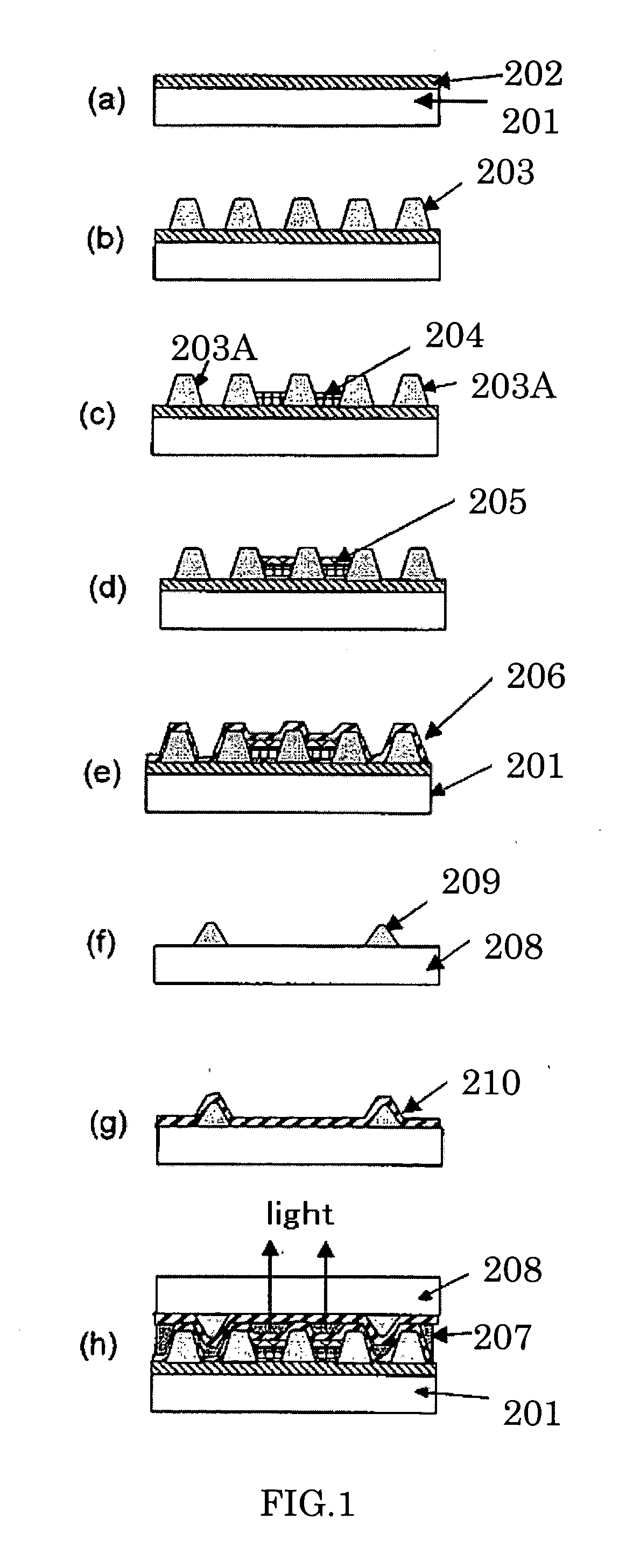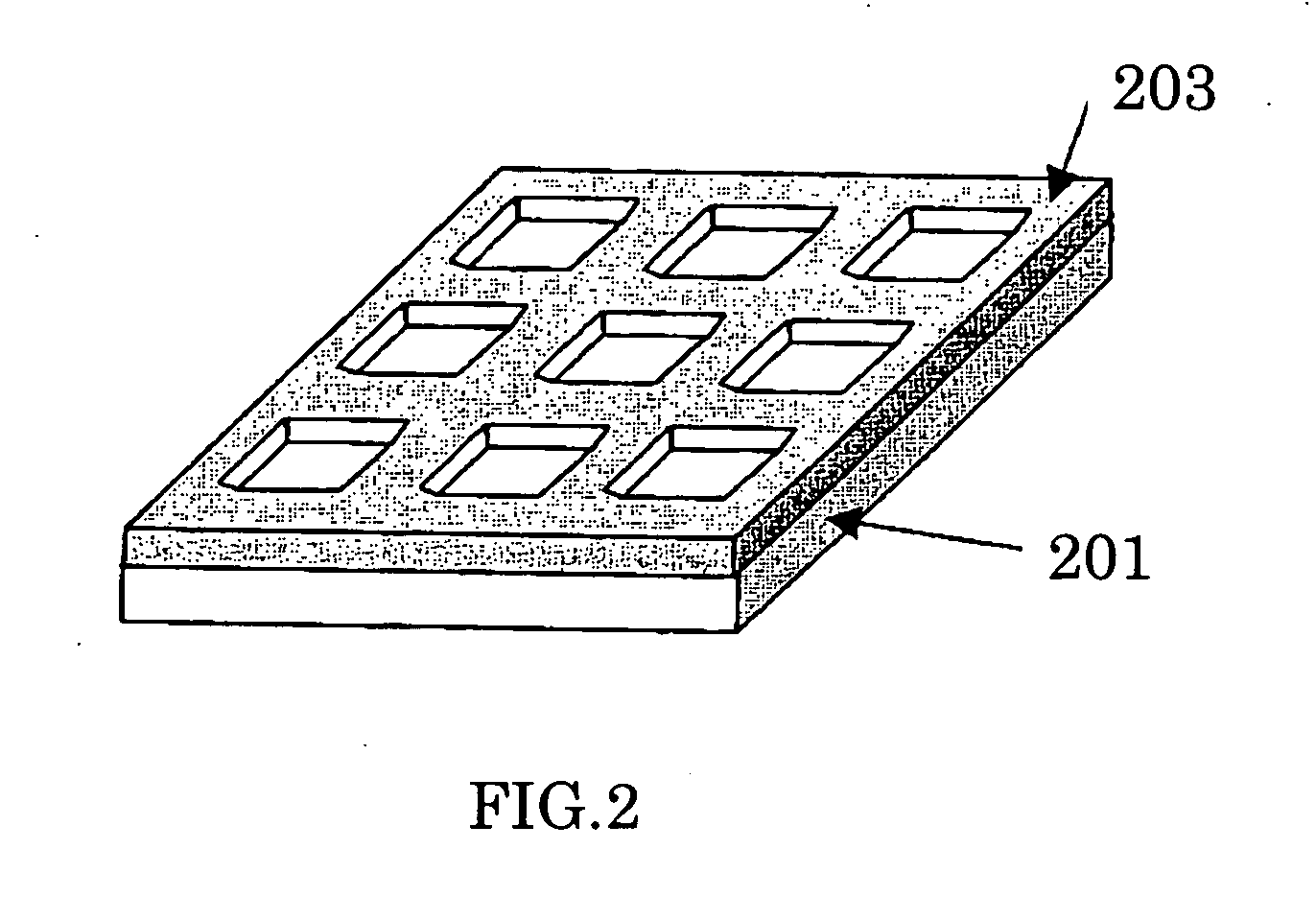Organic electroluminescence panel and manufacturing method of the same
- Summary
- Abstract
- Description
- Claims
- Application Information
AI Technical Summary
Benefits of technology
Problems solved by technology
Method used
Image
Examples
first embodiment
[0020] One embodiment of the organic electroluminescence panel (hereinafter, referred to as “organic EL panel”) and a method of manufacturing the same according to the present invention will be described below. FIG. 1 shows explanatory views illustrating one embodiment of the method of manufacturing the organic EL panel of the invention. With respect to a top emission panel, an electrode layer on the top emission side may be either anode or cathode as long as at least one of the anode and the cathode is translucent.
[0021] Material for a substrate 201 (board) is preferably selected depending on the direction of extracting the luminescence. For example, when extraction of the light is intended, glass; quartz; a film or sheet of a plastic such as polypropylene, polyether sulfone, polycarbonate, cycloolefin polymer, polyarylate, polyamide, polymethyl methacrylate, polyethylene terephthalate or polyethylene naphthalate; or a transparent substrate produced by laminating inorganic oxide s...
second embodiment
[0039] Next, an embodiment of the organic EL panel according to the invention will be explained with reference to the drawings. The organic EL panel according to the invention is not limited to the embodiment described below.
[0040] Moreover, with respect to the top emission panel in the invention, the electrode layer on the top emission side may be either an anode or a cathode as long as at least one of the anode and the cathode is translucent. Hereinafter, one example of the top emission organic EL panel according to the invention will be explained with reference to FIG. 3.
[0041] The organic EL panel 100 has, as shown in FIG. 3(h), a planar supporting substrate 1, and an organic EL element 101 provided on one face of this supporting substrate 1. The organic EL element 101 has: numerous first electrodes 2 formed to give a matrix arrangement to correspond to display pixels on one face of the supporting substrate 1; an organic light emitting medium layer 5 laminated every first elec...
example 1
[0082] Next, Example 1 according to the first embodiment of the invention will be explained with reference to FIG. 1.
[0083] Using glass as the substrate 201, an ITO film as the anode layer 202 was formed to give a thickness of 150 nm on the substrate 201 by a sputtering method (FIG. 1(a)).
[0084] Next, pattern formation was carried out using a positive photosensitive polyimide resin as the box-like partition 203 with a photolithography method (FIG. 1(b)).
[0085] Subsequently, as the polymer optical gain medium layer 204, the positive hole transport layer (20 nm) was formed with a mixture of poly(3,4-ethylenedioxythiophene) and polystyrenesulfonic acid, and a luminescent layer (100 nm) was formed with poly[2-methoxy-5-(2′-ethyl-hexyloxy)-1,4-phenylenevinylene](MEHPPV), respectively by a spin coating method (FIG. 1(c)).
[0086] Next, film formation of Ca (5 nm) was carried out as the cathode layer 205 with a vacuum evaporation method, and thereafter an ITO film (150 nm) was laminated ...
PUM
| Property | Measurement | Unit |
|---|---|---|
| Time | aaaaa | aaaaa |
| Thickness | aaaaa | aaaaa |
| Pressure | aaaaa | aaaaa |
Abstract
Description
Claims
Application Information
 Login to View More
Login to View More - R&D
- Intellectual Property
- Life Sciences
- Materials
- Tech Scout
- Unparalleled Data Quality
- Higher Quality Content
- 60% Fewer Hallucinations
Browse by: Latest US Patents, China's latest patents, Technical Efficacy Thesaurus, Application Domain, Technology Topic, Popular Technical Reports.
© 2025 PatSnap. All rights reserved.Legal|Privacy policy|Modern Slavery Act Transparency Statement|Sitemap|About US| Contact US: help@patsnap.com



